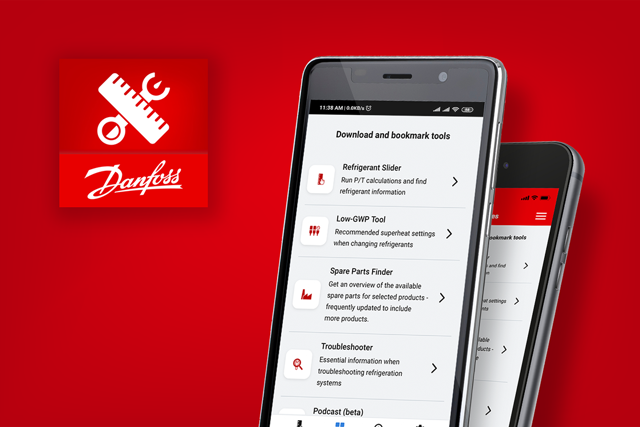Refrigerant Options
Facing the increasing regulatory pressures to eliminate high-GWP refrigerants, many alternatives are introduced . Generally speaking there is a trade-off between GWP and flammability. Most of the old nonflammable ‘signature’ refrigerants have no simple low-GWP drop-in replacements: with other words flammability is linked to GWP and refrigerant capacity.
Lower GWP and higher capacity comes with increased flammability.
The main method to reduce GWP of HFCs is to make them chemically unstable (unsaturated) so they in case of release to the atmosphere will break down within a short time frame and not remain in the atmosphere. The main unsaturated F-gases , also known as HFOs (hydrofluoroolefins), are R1234yf, R1234ze (E), and R1233zd. They have very low GWP levels, are non-flammable or only mildly flammable, and belong to a group of lower density refrigerants. Pure high density HFO’s as R1132 (E) are unfortunately far too unstable to use as a single fluid refrigerant.
To obtain lower GWP of higher density HFCs blends between HFOs and HFCs are made. The proposed blends within the same group are similar to each other, with the main differences being based on which ‘R1234 type’ is used and the exact refrigerant it is replacing.
Refrigerant classes
According to ASHRAE 34, refrigerants are divided into classes depending on toxicity and flammability. A1 refrigerants are non-flammable and have very low toxicity. At the other end of the scale, with high flammability and high toxicity, no B3 refrigerants are available. Hydrocarbons, characterized by low toxicity and high flammability, require special precautions. Ammonia, on the
other hand, is highly toxic and has low flammability. It is widely used, especially in industrial refrigeration due to its high energy efficiency.
The A2L subgroup is made up of refrigerants with a low flammability. Flame propagation speed is low, less than 10 cm/s. These refrigerants are already playing a significant role as we move away from the old high-GWP HFCs.
Composition and GWP
There are application-specific pros and cons for using refrigerants. How do the energy-efficiency improvement schemes match? Is it intended for a fast drop-in or is it part of a major redesign cycle? What are the climate conditions and will the local markets be ready to handle the refrigerant? What is the impact of glide from a service perspective? Will it make sense to go for one type of refrigerant or will a dual strategy be better? Today it is evident that A2L refrigerants are efficient and available – albeit a tremendous amount of new refrigerant releases are evident. Components are available for the main A2L refrigerants. For R1234ze some special conditions apply. R1234ze is categorized as an A2L refrigerant but is only flammable above 30°C. This is why the EN 378, which is harmonized with the EU PED Directive, does not recognize R1234ze as a hazardous substance, but as a PED group 2 fluid. This has the positive effect that it avoids material traceability for pipes and components until 100 mm in normative diameter while the other flammable refrigerants need traceability at 25 mm.




